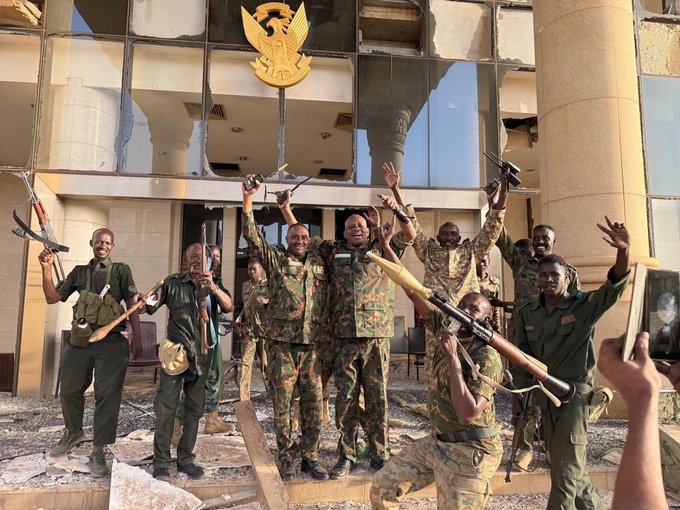NAIROBI, Kenya – In a dramatic turn of events, Sudan’s army announced on Friday that it has recaptured the presidential palace in Khartoum from the paramilitary Rapid Support Forces (RSF).
This victory comes after nearly two years of brutal conflict that has devastated the country.
The battle for Sudan’s capital reached a fever pitch as the army surged through Khartoum, culminating in the takeover of the presidential palace.
Army spokesperson Nabil Abdallah declared on state television that their forces had “completely destroyed the enemy’s fighters and equipment” while seizing a significant stockpile of weapons.
The RSF had held the palace since April 2023, when the conflict erupted between the two factions.
At the time, the paramilitary force swiftly seized control of Khartoum, forcing the army-backed government to relocate to Port Sudan.
However, with recent strategic gains, the army appears to be reclaiming its foothold in the capital.
BREAKING: Sudan’s Army retakes control of the Presidential Palace in central Khartoum from RSF militias after two years.
The Fall of a Key RSF Stronghold
The capture of the palace marks a crucial turning point in the war.
Military analysts suggest that losing this strategic site—once a symbol of state power—deals a severe blow to the RSF’s operations.
According to sources, the paramilitary group had used the palace as a command center, storing weapons and deploying elite fighters from its fortified position.
The battle also destroyed RSF equipment and disrupted one of its key supply lines in the capital.
In recent months, the army has gained momentum, reclaiming central Sudan before shifting focus to Khartoum.
Earlier this year, they broke a nearly two-year RSF siege on their General Command headquarters, allowing them to merge forces and encircle RSF strongholds in the city.
According to military sources, what remains of the RSF has now retreated into scattered buildings in Khartoum’s center.
As the army pushes forward, Sudanese civilians remain trapped in the crossfire, with the war having already displaced over 12 million people and caused one of the world’s worst hunger crises.




